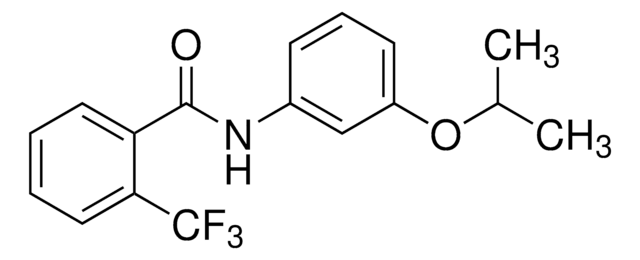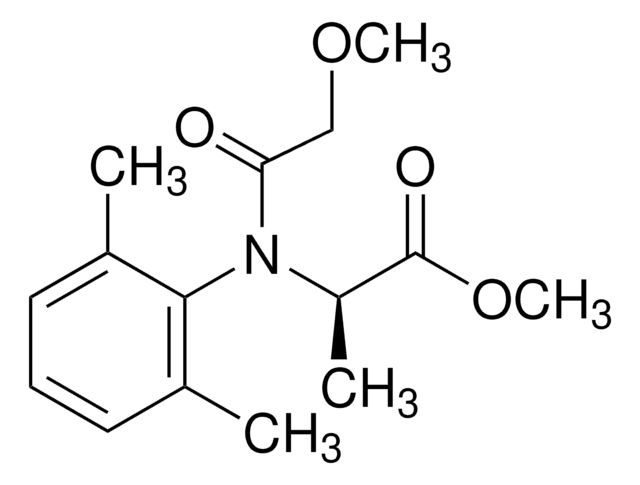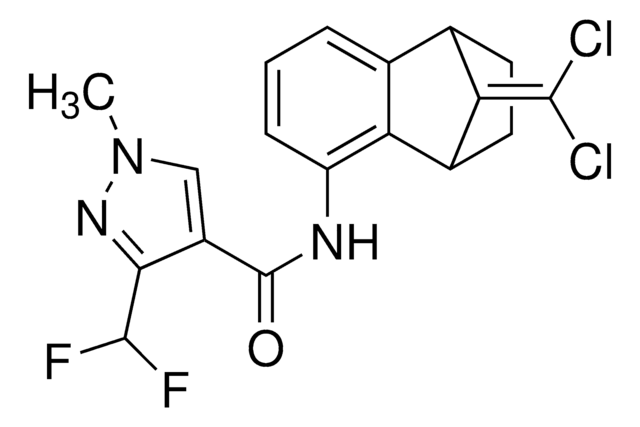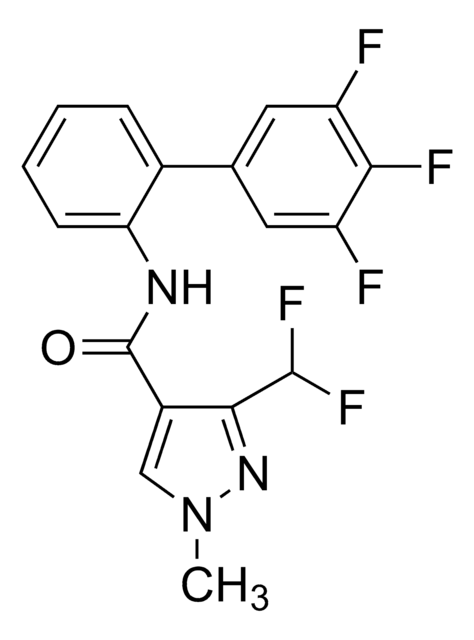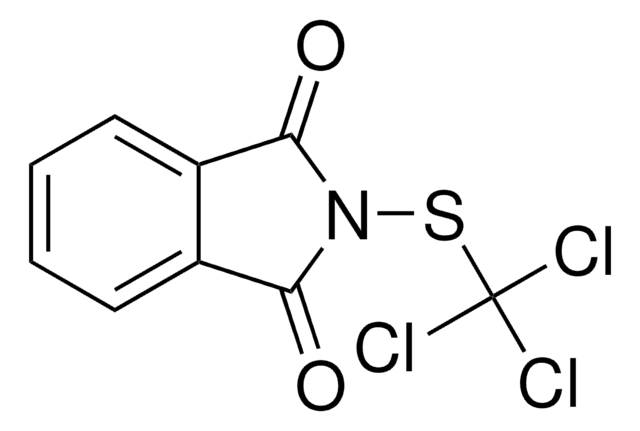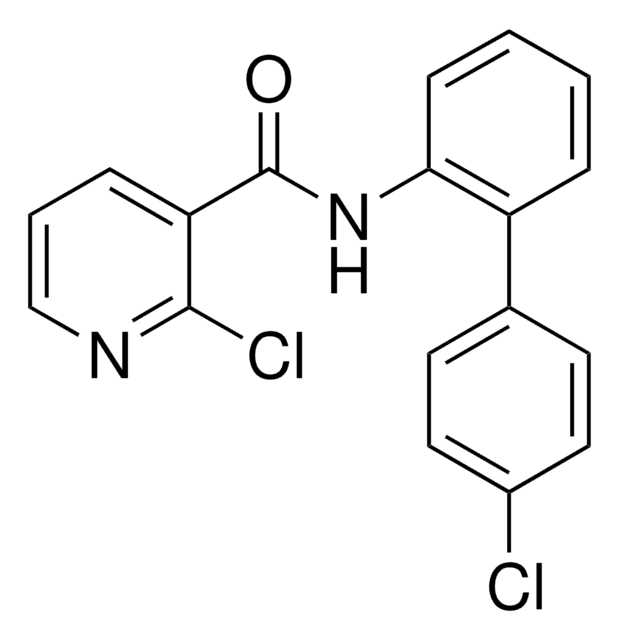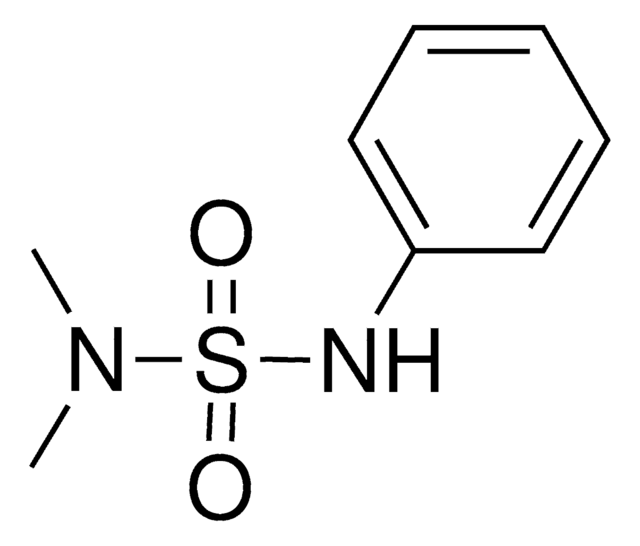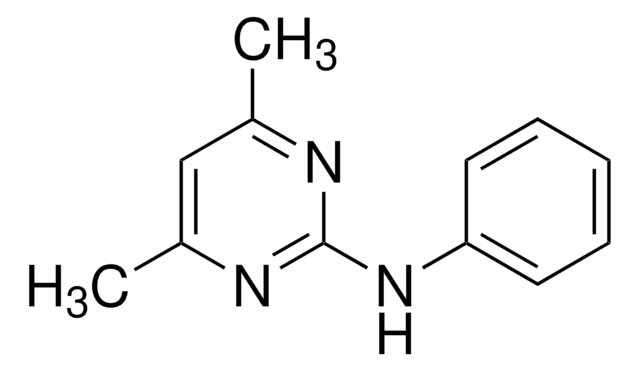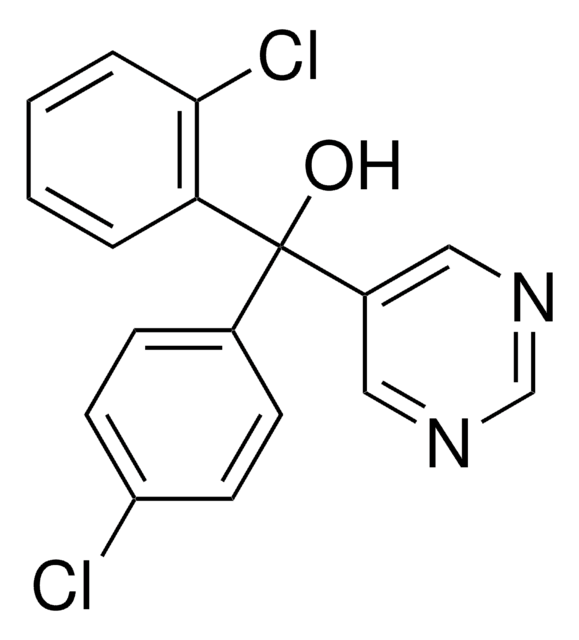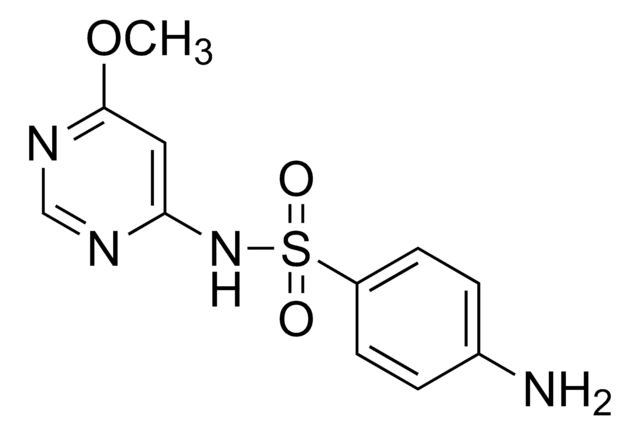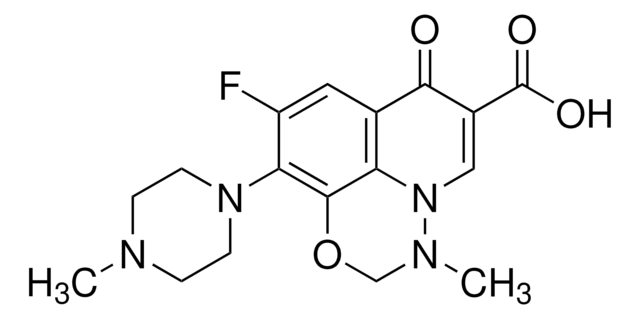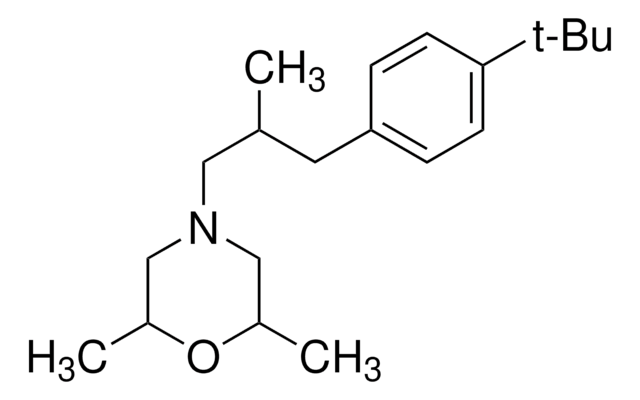32532
Isopyrazam
PESTANAL®, analytical standard, mixture of isomers
Synonym(s):
3-(Difluoromethyl)-1-methyl-N-[1,2,3,4-tetrahydro-9-(1-methylethyl)-1,4-methanonaphthalen-5-yl]-1H-pyrazole-4-carboxamide
About This Item
Recommended Products
grade
analytical standard
Quality Level
product line
PESTANAL®
shelf life
limited shelf life, expiry date on the label
technique(s)
HPLC: suitable
gas chromatography (GC): suitable
application(s)
agriculture
environmental
format
neat
SMILES string
CC(C)C1C2CCC1c3c(NC(=O)c4cn(C)nc4C(F)F)cccc23
InChI
1S/C20H23F2N3O/c1-10(2)16-12-7-8-13(16)17-11(12)5-4-6-15(17)23-20(26)14-9-25(3)24-18(14)19(21)22/h4-6,9-10,12-13,16,19H,7-8H2,1-3H3,(H,23,26)
InChI key
XTDZGXBTXBEZDN-UHFFFAOYSA-N
Looking for similar products? Visit Product Comparison Guide
Related Categories
General description
Application
- Honeybees by dispersive solid-phase extraction (dSPE), followed by liquid and gas chromatography combined with tandem mass spectrometry (LC-MS/MS and GC-MS/MS) operating in electron ionization (EI) and multiple reaction monitoring (MRM) modes of detection.
- Bee pollen samples by GC-MS/MS in single reaction monitoring (SRM) mode of detection.
Legal Information
Signal Word
Danger
Hazard Statements
Precautionary Statements
Hazard Classifications
Aquatic Acute 1 - Aquatic Chronic 1 - Carc. 2 - Repr. 1B - Skin Sens. 1B
Storage Class Code
6.1C - Combustible acute toxic Cat.3 / toxic compounds or compounds which causing chronic effects
WGK
WGK 3
Flash Point(F)
Not applicable
Flash Point(C)
Not applicable
Personal Protective Equipment
Choose from one of the most recent versions:
Already Own This Product?
Find documentation for the products that you have recently purchased in the Document Library.
Customers Also Viewed
Our team of scientists has experience in all areas of research including Life Science, Material Science, Chemical Synthesis, Chromatography, Analytical and many others.
Contact Technical Service
